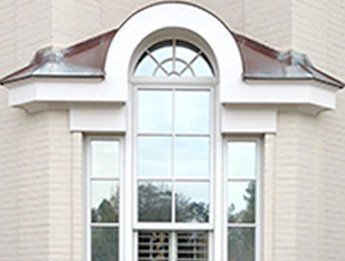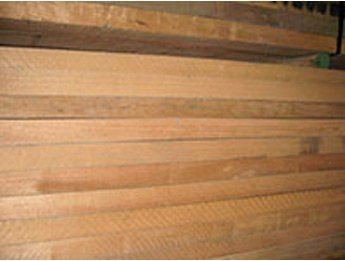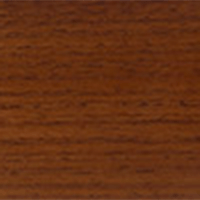Spanish Cedar (Cedrela odorata)
Over 75 Years of Experience | Family Owned | Freight Shipping Available
Over 75 Years of ExperienceFamily OwnedFreight Shipping Available
Spanish Cedar (Cedrela odorata)
A popular wood for a variety of luxury applications, Spanish Cedar has been effectively used for millwork, cabinetry, fine furniture, musical instruments, boat-building, cigar wrappers and humidors, patterns, sliced and rotary-cut veneer, decorative and utility plywood. Consistently durable, Spanish Cedar is also used for general outdoor and construction work, paneling and veneer wood.
Family:
Meliaceae
Other Common Names: Cedro, Acajou rouge, Cedre rouge, Ceder.
Uses: Wood is favored for millwork, cabinets, fine furniture, musical instruments boat building, patterns, sliced and rotary-cut veneer, decorative and utility plywoods, cigar wrappers, and cigar boxes. Volatile oils may restrict use for some applications (e.g., clock cases).
Thicknesses: Available in 4/4, 5/4, 6/4, 8/4, 10/4, 12/4, and 16/4 Air-Dried and Kiln-Dried.
Grades: F1F and Better, Quarter Sawn, #1 Common and Better, #2 Common and Better, Select and Better, FAS, FAS and Better.
Distribution: Spanish Cedar occurs from Mexico to Argentina and is found in all countries except Chile. Trees make their best growth on rich, well-drained humid sites but may also compete favorably on drier hillsides; intolerant of water-logged locations.
The Tree: Under favorable conditions will reach heights over 100 ft and diameters 3 to 6 ft above the substantial buttresses. Straight cylindrical boles clear for 40 to 60 ft.
Other Common Names: Cedro, Acajou rouge, Cedre rouge, Ceder.
Uses: Wood is favored for millwork, cabinets, fine furniture, musical instruments boat building, patterns, sliced and rotary-cut veneer, decorative and utility plywoods, cigar wrappers, and cigar boxes. Volatile oils may restrict use for some applications (e.g., clock cases).
Thicknesses: Available in 4/4, 5/4, 6/4, 8/4, 10/4, 12/4, and 16/4 Air-Dried and Kiln-Dried.
Grades: F1F and Better, Quarter Sawn, #1 Common and Better, #2 Common and Better, Select and Better, FAS, FAS and Better.
Distribution: Spanish Cedar occurs from Mexico to Argentina and is found in all countries except Chile. Trees make their best growth on rich, well-drained humid sites but may also compete favorably on drier hillsides; intolerant of water-logged locations.
The Tree: Under favorable conditions will reach heights over 100 ft and diameters 3 to 6 ft above the substantial buttresses. Straight cylindrical boles clear for 40 to 60 ft.
The Wood
General Characteristics:
Heartwood pinkish to reddish brown when freshly cut, becoming red or dark reddish brown, sometimes with a purplish tinge, after exposure; sharply to rather poorly demarcated from the pinkish to white sapwood. Grain usually straight, sometime interlocked; texture rather fine and uniform to coarse and uneven; luster medium to high and golden; distinctive cedary odor usually pronounced, some specimens with bitter taste.
Weight: Basic specific gravity (oven-dry weight/green volume) very variable ranging from 0.30 to 0.60, averaging about 0.40; air-dry density ranges from 23 to 47 pcf, averaging about 30 pcf.
Mechanical Properties: (First set of data based on 2-in. standard; second set 2-cm standard.) Janka side hardness about 550 lb for green material and 600 lb for air-dry. Forest Products Laboratory toughness average for green and dry material 106 in. –lb (5/8-in. specimen).
Drying and Shrinkage: Easy to air-season or kiln-dry, slight warp with little or no checking. Kiln schedule T10-D4S is suggested for 4/4 stock and T8-D3S for 8/4. A 200 F heating for 8 to 17 hours at a relative humidity of 60 percent is suggested to control oil and gum exudates in service. Shrinkage green to oven-dry: radial 4.2%; tangential 6.3%; volumetric 10.3%. Movement in service rated as small.
Working Properties: Spanish Cedar is easy to work with hand and machine tools. Easy to cut into veneer. Good nailing and gluing properties; stains and finishes well but gums and oils sometime are a problem in polishing.
Durability: Heartwood is rated as durable but there is some variability with species; resistant to both subterranean and dry-wood termites. Low resistance to attack by marine borers. Wood has excellent weathering characteristics.
Preservation: Heartwood is reported to be extremely resistant to preservation treatments. Reports on treatability of sapwood are conflicting.
Weight: Basic specific gravity (oven-dry weight/green volume) very variable ranging from 0.30 to 0.60, averaging about 0.40; air-dry density ranges from 23 to 47 pcf, averaging about 30 pcf.
Mechanical Properties: (First set of data based on 2-in. standard; second set 2-cm standard.) Janka side hardness about 550 lb for green material and 600 lb for air-dry. Forest Products Laboratory toughness average for green and dry material 106 in. –lb (5/8-in. specimen).
Drying and Shrinkage: Easy to air-season or kiln-dry, slight warp with little or no checking. Kiln schedule T10-D4S is suggested for 4/4 stock and T8-D3S for 8/4. A 200 F heating for 8 to 17 hours at a relative humidity of 60 percent is suggested to control oil and gum exudates in service. Shrinkage green to oven-dry: radial 4.2%; tangential 6.3%; volumetric 10.3%. Movement in service rated as small.
Working Properties: Spanish Cedar is easy to work with hand and machine tools. Easy to cut into veneer. Good nailing and gluing properties; stains and finishes well but gums and oils sometime are a problem in polishing.
Durability: Heartwood is rated as durable but there is some variability with species; resistant to both subterranean and dry-wood termites. Low resistance to attack by marine borers. Wood has excellent weathering characteristics.
Preservation: Heartwood is reported to be extremely resistant to preservation treatments. Reports on treatability of sapwood are conflicting.







Share On: